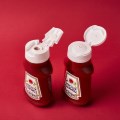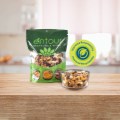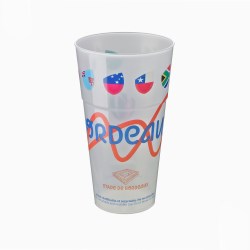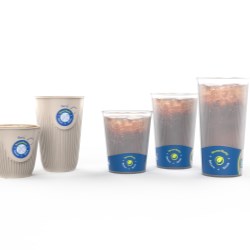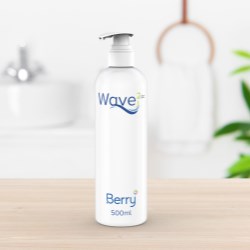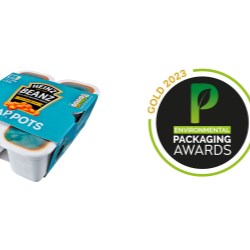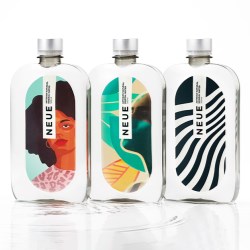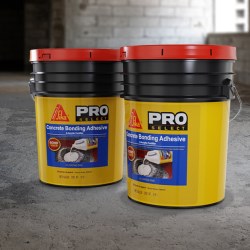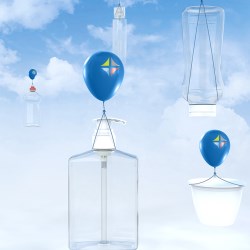

In a circular economy, products are used over and over – kept in use for as long as possible through reusing, repairing, and recycling instead of being thrown away. In today’s predominately linear economy, we use resources from the Earth to create products that are generally sent to landfill or incinerated at the end of their use. This leads to a loss of precious natural resources and significant amounts of waste.
Consumers are rightfully demanding change and looking to brands they trust to help eliminate plastic waste. And those brands look to us to help them keep resources in use and out of our environment.
We recognize the global problem and the role we play in eliminating it. To help customers meet the growing sustainability demands of today and tomorrow, we design and develop new products and materials that advance our pathway to circularity by increasing the use of recycled content, minimizing waste, and improving recyclability.
Outlined in this document, Berry Global’s pathway to circularity provides a strategic framework for achieving our Impact 2025 circularity goals, including:
- 100% reusable, recyclable, or compostable packaging by 2025
- Lightweight products
- Achieve 30% circular plastics across our fast-moving consumer goods (FMCG) packaging by 2030
- Increase the use of recycled content across our FMCG packaging to 10% by 2025
Goal: 100% reusable, recyclable, or compostable packaging by 2025
With guidance from RecyClass and the Association of Plastic Recyclers, we are working toward our goal of 100% reusable, recyclable, or compostable packaging by 2025 by combining our expertise in design, manufacturing, and material science to design and develop innovative products.
To date, we have achieved 79% reusable, recyclable, or compostable packaging across our fast-moving consumer goods packaging and our European flexible films division is using more than 10,500 metric tons of recycled content in packaging products. From biobased wrapper films and compostable cloths to 100%-recycled content hair care bottles – our B Circular Range follows six key design principles to offer widely recyclable packaging, reuse and refill options, products with high levels of recycled and renewable material, and lightweight items.
Berry’s Five Principles for Circular Packaging Design
1. Resin Compatibility
Rigid Packaging:
- Substitute non-recyclable materials with widely recyclable plastics. For example, by converting non-recyclable polystyrene (PS) components to polypropylene (PP).
Example:
- We partnered with Taco Bell to improve the recyclability of their cups with a conversion from expanded polystyrene (EPS) and coated paper to a clear, more recyclable, fully plastic option. One year later, we helped Taco Bell move fully out of coated paper for cold beverages to even lighter weight clear plastic cups and lids. From 2018 to 2021, Taco Bell converted a total of 66.9 million pounds of difficult to recycle materials and saved 9.5 million pounds through light-weighting due to its shift from PS and coated paper to a clear plastic solution.
Flexible Packaging:
- Modify multi-material films to be compatible with the polyethylene (PE) film recycling stream.
- Substitute non-recyclable materials with widely recyclable plastics. For example, by converting non-recyclable polyvinyl chloride (PVC) to PE.
Examples:
- Entour™ sealant film technology improves the recyclability of traditional multilayer films through compatibilization, enabling converters and brand owners to transition to more recyclable structures.
- Omni® Xtra low gauge, PE-based film improves the recyclability of traditional mono-layer films for meat, produce, deli, and bakery packaging by combining the unique mechanical properties of PVC film with the ability to be fully recycled through European curbside and front-of-store PE recycling streams.
2. Mono-Material Design
Eliminate the use of non-plastic components, including metal wire handles on pails and metal springs.
Examples:
- Wave2cc is the new lock-up 2cc atmospheric dispenser for the beauty and personal care industries made from 100% polyolefin to deliver improved recyclability compared to products made with metal parts. Wave2cc is recyclable when paired with a PET bottle where appropriate facilities exist.
Booster-S is a pre-compression trigger sprayer for the homecare industry with excellent spray control. Made entirely from plastic with a PP spring, Booster-S provides improved recyclability compared to mainstream triggers, as it is recyclable with PET bottles and 98% recyclable with PP bottles (certified by Institute Cyclos).
3. Color
Eliminate the use of colorants that cannot be detected by current recycling sortation systems by designing packaging with a L*(lightness)> 40 or using Near Infra-Red (NIR)-detectable colors.
Examples:
- By replacing carbon black-based colorants with non-carbon black alternatives, we provided a more sustainable solution for the packaging of Norwegian ice cream producer Diplom-Is’s Royal brand. Because non-carbon black packaging is detectable by NIR sensors used for sorting in recycling facilities, the ice cream containers can now be identified for recycling purposes using special high-quality, non-carbon black masterbatch with special pigments.
4. Packaging Size
Design packaging to meet the minimum size requirement of 2”x 2”, so it can be detected and sorted by screening technology at Materials Recovery Facilities (MRFs).
Examples:
- We are currently working to design a recycle- ready, stock 50-mL spirits bottle that will help ensure bottles such as mini shooters can be properly sorted during screening at MRFs.
5. Chemicals of Concern
Prevent chemicals of concern from entering our products to help ensure that they don’t contaminate the recycling stream.
Examples:
- We screen all new raw materials for compliance with our restricted substances list.
Goal: Lightweight Products
To achieve our goal of lightweighting our products, we are investing in innovative materials, including less viscous resins to fill thin parts during molding and cutting-edge equipment to provide the most efficient processes for customers. This includes updating our injection molding tooling to achieve lighter weight products without compromising product quality or function.
In 2022, we invested $687 million in projects designed to improve our businesses, which contributed to achieving our average annual product weight reduction rate of 1%.
Examples:
- Fortitude™ Ultra-High Performance Hybrid Stretch Hand Film provides the ultimate in pallet wrapping experience while delivering a 29% average reduction in material compared to the previous version. Converting our customers led to a 1.69-million-pound material reduction in 2022, which reduced CO2 emissions by an estimated 1,332 metric tons – equivalent to 168 homes’ annual energy use or taking 287 U.S. gasoline-powered vehicles off the road for one year.
- With the shared pursuit of creating sustainably focused packaging solutions, we collaborated with Mars Wrigley to deliver new, lighter weight* snack jars made with 15% PCR for their M&M’S®, SKITTLES®, and STARBURST® brands. Together, we reduced the weight of their previous 81 and 87-ounce jars by 10 grams per jar, saving 374 metric tons of carbon dioxide (CO2).
*Compared to previous versions of the product
Goals: Achieve 30% circular plastics across our FMCG packaging by 2030 and increase the use of recycled content across our FMCG packaging to 10% by 2025
We access the supply of high-quality recycled materials and design products more effectively so we can recapture and remanufacture them to foster cleaner communities for future generations. In 2022, we increased the amount of circular plastics purchased across our business by 21%, including increasing post-consumer resin (PCR) across our business by both volume and percentage. PCR now makes up 3.4% of our overall resin purchases, while our total circular resin consumed, including PCR, post-industrial recycled (PIR), and bioplastics has grown to 9.1%.
To achieve our goals of increasing our use of circular plastics and using more recycled content across our packaging, we take a three-pronged approach that combines our unmatched global capabilities, sustainability leadership, and deep innovation expertise:
1. Develop Supply of Recycled and Renewable Plastics
- Partner with organizations that are critical to ending plastic waste, including the Ellen MacArthur Foundation and World Wildlife Fund. We have taken a leadership role with the Alliance to End Plastic Waste and The Recycling Partnership to support education and infrastructure investments needed to increase the use of recycled content and improve the collection and recyclability of post-consumer plastic.
- Drive supply of mechanically recycled plastics by identifying and partnering with recyclers to help ensure access to circular resins that meet our precise quality and regulatory requirements.
- Invest in regional infrastructure to aid in plastic waste recovery, including our proprietary Cleanstream® PCR material from our new Leamington Spa, UK facility. Cleanstream® recycled PP has received a U.S. Food and Drug Administration letter of no objection for use in food contact applications.
- Increase supply of advanced recycled and biobased plastics by pushing our existing suppliers of virgin, fossil-based resin to develop alternative non-fossil feedstocks, including both recycled and renewable. Through investments in necessary infrastructure, we are delivering circular products at scale for our customers, like Wendy's drink cups that incorporate 20% ISCC PLUS-certified, recycled plastic on a mass balance basis.
2. Qualify and Test Internally
Conduct thorough internal testing to qualify new non-fossil-based sources, validate product safety, and demonstrate regulatory compliance.
3. Commercialize
Collaborate with customers to take proof of concepts to scale and deliver the latest innovative, sustainable packaging solutions to help make progress toward ambitious sustainability goals.
Download our 2022 impact report and learn more about our commitment to ESG.




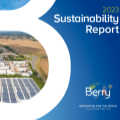
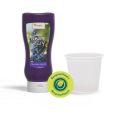


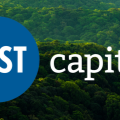
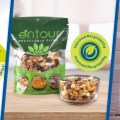



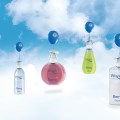

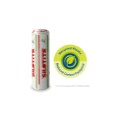

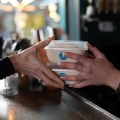

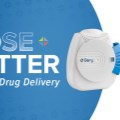
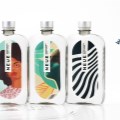
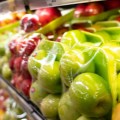


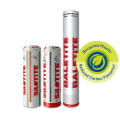




.jpg)
